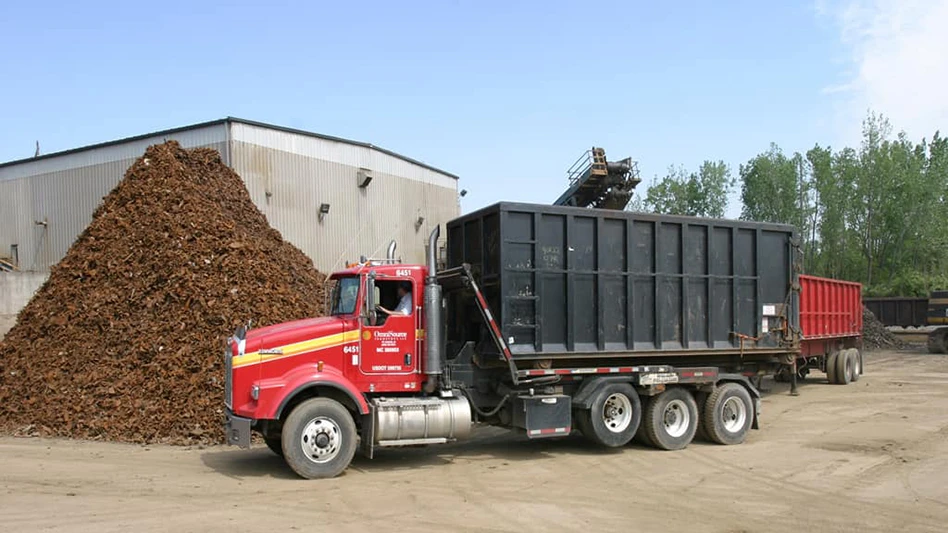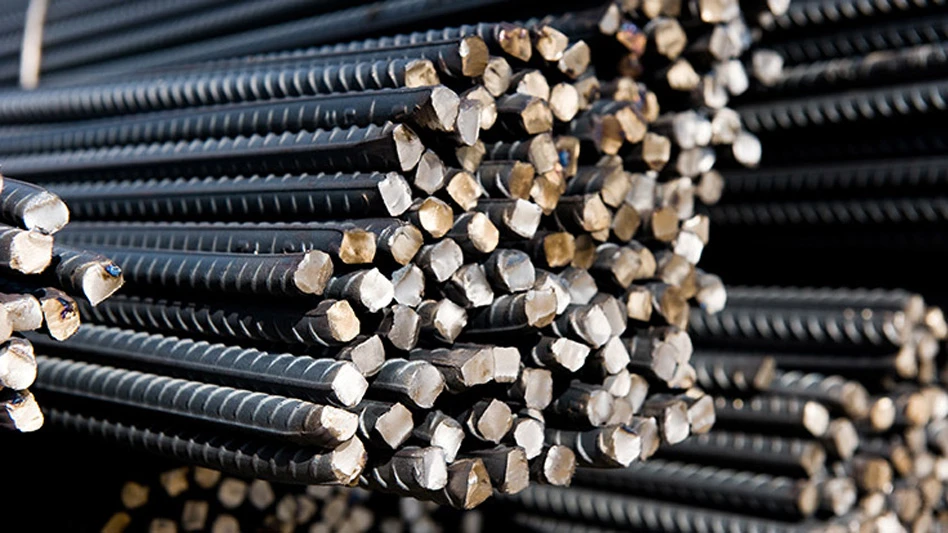As campaign issues go, currency valuation is likely to remain in the background in this year’s presidential race. Nonetheless, some 87 members of Congress recently signed and sent a letter to President Bush regarding the perceived under-valuation of the Chinese yuan.
The commodity pricing and flow of scrap that creates the market conditions for scrap recyclers can be affected in many ways by currency exchange rate fluctuations, and the past couple of years have offered several examples.
Demand for American scrap can rise and fall with the value of the dollar (or more accurately, in opposition to it), and even processing equipment shopping decisions can be affected by the value of the dollar, euro and Japanese yen.
YUAN-A BET? Economic policy analysts and formulators have been kept busy in recent years deciding if or when China should cease to peg the value of its currency, the yuan, to the U.S. dollar.
A fair number of American manufacturers would like to see the practice either ended or modified, because they believe American-made goods are being forced to compete unfairly with Chinese-made goods.
"By the deliberate undervaluation of its currency, China skews the prices for its goods in the global marketplace, especially disadvantaging the U.S. producers," says Skip Hartquist, counsel to a group known as the Fair Currency Alliance (FCA).
The FCA consists of the Copper and Brass Fabricators Council Inc., Washington, and the Non-Ferrous Founders Society, Park Ridge, Ill. The membership of the latter group includes many North American-based consumers of copper scrap. They have expressed consistent concern regarding both the escalating price and the perceived scarcity of copper scrap.
When China’s fast-growing copper and brass mill, smelter, refinery and foundry segment in China began purchasing more and more North American scrap in 2003, scrap-melting facilities in the United States found themselves paying increased costs for scrap for greater than they could pass on to their customers when they sold their finished product.
In a recent news release, the FCA cited five steps it believes the Chinese government should take to erase some of what the group sees as unfair advantages that Chinese manufacturers enjoy at the expense of manufacturers in other nations. Among those five steps was changing the way the yuan is pegged to the U.S. dollar.
"The pegging of the Chinese currency, the yuan, to a fixed rate of exchange with the U.S. dollar has acted to encourage exports of semi-fabricated and fabricated products of copper and copper alloys from China to the United States," the group states.
The FCA adds that, "Due to the ongoing fixed rate of exchange, it has been estimated that the Chinese currency is undervalued by approximately 40 percent in relation to the U.S. dollar, which has allowed Chinese producers of downstream copper products to price aggressively in the U.S. market. The result has been massive sales losses by U.S. producers of fabricated copper products and a near crippling of the industry."
|
Asian Demand Fluctuating |
|
The demand for scrap metal from rapidly growing Asian economies has helped boom times return for North American scrap processors. Scrap companies in the U.S. must now monitor business events in China and India, in particular, to get a feel for where scrap industry conditions might be heading. Conditions in those two countries by no means move in concert, as China’s central government and its provincial governments can set policies that bring swift changes to their metals markets. India’s more market-centered economy moves in unpredictable cycles of its own. Recently, China’s insistence on strict control of imported secondary raw materials through its Department of Supervision on Inspection General Administration of Quality Supervision Inspection and Quarantine of China (AQSIQ) shook the market by constricting demand and ultimately bringing down metals prices. Market observers believe, though, that in order to keep its metals production facilities operable, China will have to put its system in place and re-open its ports to scrap shipments. An August Reuters report quoted several sources who speculated that copper scrap buyers in China will return in force to the global market this fall. Scrap inventories in China have reportedly been depleted while the government has restricted imports as it puts the new AQSIQ system into place. The disappearance of inventories should prompt scrap consumers to re-establish buying habits in the U.S. and Europe. In India, meanwhile, new restrictions there may temporarily slow scrap transactions just as Chinese buyers are ready to re-enter the market. The Hindu Business Line has reported that regulators in at least one Indian port have brought a halt to overseas container scrap shipments. There appears to be confusion over the new practice of steel rail scrap arriving in containers. Import duties charged on nonferrous scrap are not applicable to these new ferrous scrap shipments, but many customs inspectors are not necessarily able to tell the difference between a ferrous load and a nonferrous shipment. |
The FCA has recruited some members of Congress to sign on with its cause, as in mid-August a group of 87 representatives and senators sent a letter to President Bush stating that, "China’s deliberately undervalued exchange rate results in extremely low prices on China’s exports to the United States, unfairly pressuring domestic firms by undercutting their pricing power."
The letter closed with a request for action: "We respectfully and strongly urge you to continue to press China for meaningful and expeditious currency reform, especially during the anticipated upcoming visit by the Chinese vice premier later this summer."
Economists are not unanimous in their views of what the Chinese government should do relative to its pegged currency. In early August, an official from Japan’s Ministry of Finance reportedly stated that China should revamp its pegging of the yuan at roughly 8.28 yuans to the dollar as a pre-condition to joining the Group of Seven (G7) industrialized nations.
Steven Sitao Xu of the Economist Corporate Network in China, told a July gathering of financial analysts that while reforms within China were necessary, removing the yuan’s peg to the U.S. dollar was not one he would recommend.
And New York-based investment advisor Henry C. K. Liu believes the U.S. government has put itself in a position where it must keep its currency value strong in order to attract overseas buyers for its treasury bonds and financial instruments.
"A strong dollar . . . forces the central banks of U.S. trading partners to hold their dollar trade surplus in U.S. bonds and assets, if they want protection from speculative attacks on their currencies," Liu wrote in 2003.
EURO STRENGTH. If the aim of U.S. policy makers is to retain the strongest currency, as Liu contends, the past 12 months have seen a set-back when the dollar goes up against the European Union’s euro.
Through most of 2003 and 2004, the value of the euro against the dollar has climbed steadily. When the euro was introduced, it initially seemed to settle in a band of being valued at around 92 to 97 cents to the dollar.
As of mid-August, the euro was trading at $1.23, and has reached as high as $1.27 in the first quarter of 2004. The emergence of a strong euro can effect the operations of recyclers in several ways.
If the euro retains its strength against the dollar, it could make North American scrap an attractive purchasing option for European consumers of scrap materials, perhaps reviving some trade routes to metals and paper production facilities in places like Turkey, Spain and Western Europe.
But the shift in currency strength can cause some turmoil as well, especially for producers of processing and material handling equipment made in Europe and sold into the North American market.
Manufacturers in the euro zone have a considerable presence in several recycling equipment markets, including automated sorting systems, high-volume paper balers and hydraulic scrap handling machines.
These manufacturers are faced with a perilous choice: either raise their selling prices and risk losing out to now lower-priced U.S. competitors or retain their pricing from the pre-strong euro era and complete transactions with disappearing profit margins.
The dilemma they face may not go away soon, as most observes of world currencies do not see conditions tilting toward a weaker euro. In fact, in May of this year, foreign investors sharply slowed the pace of their investment in the United States, according to a Reuters report.
Net capital inflows totaled $56.4 billion that month, down from $76.0 billion in April. If some of that money is flowing into Europe instead, that would not bode well for the dollar regaining some of its strength.
The widening trade deficit of the United States has been cited as a major factor in the currency value equation. The U.S. Commerce Department announced in August that the monthly trade deficit widened to a record $55.8 billion in June, several billion dollars more than many forecasters predicted. Even with the dollar trading favorably against the euro, exports dropped and imports rose.
Some observers say U.S. oil exports alone are the culprit, while others believe U.S. manufacturers are still adjusting to the notion that they can ship finished goods overseas with the help of favorable exchange rates.
For recyclers, their suppliers and consumers of scrap materials, there is no question that the complex and sometimes volatile currency markets will bear watching as company leaders make plans for 2005. When currency values shift, entire trading patterns and assumptions of how to do business can become outdated in rapid fashion.
The author is editor of Recycling Today and can be contacted via e-mail at btaylor@gie.net.
Get curated news on YOUR industry.
Enter your email to receive our newsletters.

Explore the September 2004 Issue
Check out more from this issue and find your next story to read.
Latest from Recycling Today
- Toppoint Holdings expands chassis fleet
- Lego creates miniature tire recycling market
- Lux Research webinar examines chemical recycling timetables
- Plastics producer tracks pulse of wire recycling market
- Republic Services, Blue Polymers open Indianapolis recycling complex
- Altilium produces EV battery cells using recycled materials
- Brightmark enters subsidiaries of Indiana recycling facility into Chapter 11
- Freepoint Eco-Systems receives $50M loan for plastics recycling facility






